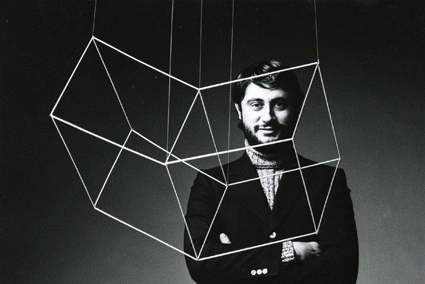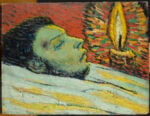Gianni Colombo

Mostra personale
Comunicato stampa
Monica De Cardenas is pleased to announce an important retrospective of Gianni Colombo (1937-1993) at the gallery in Zuoz, in a moment of major international rediscovery of the work by the Italian artist.
As Olafur Eliasson recently remarked, regarding Colombo: "Today the great importance of his work" does not lie so much in its "formal results" as in "its consequences," the effects it has been able to produce. In fact, more than a catalogue of forms or a collection of objects of a minimalist character, over the years Colombo produced a remarkable gathering of devices: perceptive machines, interchangeable sculptures, force fields. Works, that is, which present themselves for their functioning rather than for the regimen of signs they put on stage. The predominance of the performative over the representative character that forms the core of the works of Gianni Colombo defines the unique, foreshadowing character of all of his research.
Among the protagonists of international kinetic art and, later, the leading exponents of environmental art, Colombo combines the spatial research of Fontana with an original surrealist matrix, which introduces surprise and disorientation through mutability and movement. The viewer occupies the centre of his work, in terms of both direct participation and psychic engagement. Not only a spectator seen as a theoretical status, in keeping with Duchamp's definition, but a concrete observer, in his physical and sensorial reality. The white, pulsating monochromes of Colombo, or the rotating works and the luminous and architectural environments, continuously deconstruct habits of perception and behaviour in the subject encouraged to interact with them.
The exhibition at Zuoz is conceived as a retrospective on a small scale. All the types of works found in Colombo's output appear as essential specimens: from the first ceramics of the 1950 (Intermutabile) to the tactile reliefs that invite the touch (In-Out); from the electromechanical structures (Strutturazione Pulsante) to the luminous sculptures (Cromostruttura), all the way to the spaces that can be walked through and change their form, the suspended metal cubes and the "curved spaces" of the 1990s. The exhibition itinerary begins with a nucleus of central works from his output of the 1970s: the large black sculpture Bariestesia, environmental and viewed in passage, which defies the states of balance of the body; together with the works of the same period entitled Spazio Elastico in black on wood, in which the viewer can move the white elastic threads of the surface of the painting, giving rise to different patterns. One room, finally, is set aside for the luminous sculptures, with the kaleidoscopic Cromostruttura and 0-220 Volt works that modulate light intensity.
Many of the works in the show have the title Spazio Elastico, reflecting the different phenomenological approaches to this theme. The common denominator underlines one of the main concepts that Colombo shared with Lygia Clark: elasticity as a way of defying rigidity and gravity - in other words, a continuous dismissal of space and its representations.
Gianni Colombo in 1959 founded the Gruppo T in Milan, together with Giovanni Anceschi, Gabriele De Vecchi, Davide Boriani and Grazia Varisco, participating in the movement of Programmatic Art and the Nouvelle Tendance. His works were included in important exhibitions of the 1960s, from "Bewogen Beweing" (Stedelijk Museum, 1961) to "Lo Spazio dellImmagine" (1967) and "Vitalità del Negativo" (1970). In 1968 he won the first price at the Venice Biennale and took part in Documenta 4. Recently his works have been shown at the Sydney Biennial (2008) and the Venice Biennale (2011). In 2009 Castello di Rivoli held a major retrospective of his work.
Exhibition curated by Marco Scotini.
IMAGE:
Gianni Colombo con Spazio Elastico - cubi semoventi
Foto: Oliviero Toscani, detail
Courtesy: Archvio Gianni Colombo



